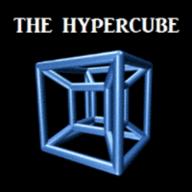續http://hk.knowledge.yahoo.com/question/question?qid=7006091802557
& http://tw.knowledge.yahoo.com/question/question?qid=1011061404245
非直立橢圓錐體曲面面積為何?
非直立橢圓錐體曲面面積為何?
2011-12-25 11:45 pm
回答 (2)
2012-01-03 5:10 am
✔ 最佳答案
圖片參考:http://imgcld.yimg.com/8/n/HA06881079/o/701112250033913873415130.jpg
(By surface integral)
Let the base be x²/a²+y²/b²=1 and the vertex be (c, 0, h), then
the surface can be parametrized as
r(u,t)=(c+u(a cost -c), bu sint, h(1-u) ), where t=-π~π, u=0~1.
∂r/∂u x ∂r/∂t =(bhu cost, -ahu sint, abu-bcu cost)
|∂r/∂u x ∂r/∂r |²=u²[(bh cost)²+(ah sint)²+(ab-bc cost)²]
=u²[(b²h²+b²c²-a²h²)cos²t-2ab²c cost+a²h²+a²b²]
The lateral area of the cone is
∫_[-π~π]∫_[0~1] u√[(b²h²+b²c²-a²h²)cos²t -2ab²c cost+a²h²+a²b²] du dt
=∫_[0~π] √[(b²h²+b²c²-a²h²)cos²t -2ab²c cost+a²h²+a²b²] dt
Special case1: a=b=R, c=0 (A vertical cone with height h)
Area=∫_[0~π] R√(R²+h²) dt =πR√(R²+h²)
Special case2: a=b=R, h=0, |c|<R (A circle with radius R)
Area=∫_[0~π] R(R-c cost) dt=πR²
2012-01-03 08:01:29 補充:
r(u,t)=(c+u(a cost -c), k+u(b sint-k), h(1-u) ), where t=-π~π, u=0~1.
∂r/∂u x ∂r/∂t =(bhu cost, -ahu sint, abu-bcu cost- aku sint)
|∂r/∂u x ∂r/∂r |²=u²[(bh cost)²+(ah sint)²+(ab-bc cost- ak sint)²]
area=∫_[0~π]√[(bh cost)²+(ah sint)²+(ab-bc cost- ak sint)²] dt
2012-01-03 10:00:53 補充:
Thanks to D:
area=(1/2)∫_[-π~π]√[(bh cost)²+(ah sint)²+(ab-bc cost- ak sint)²] dt
2012-01-03 2:42 pm
CRebecca,你中招了!
因為對於非直立橢圓錐體,其頂點除了可能只沿一軸方向傾側之外,還有可能同時沿兩軸方向傾側。
2012-01-03 09:56:22 補充:
有沒有計錯,CRebecca?
頂點同時沿兩軸方向傾側的非直立橢圓錐體其曲面真的是對稱嗎?
因為對於非直立橢圓錐體,其頂點除了可能只沿一軸方向傾側之外,還有可能同時沿兩軸方向傾側。
2012-01-03 09:56:22 補充:
有沒有計錯,CRebecca?
頂點同時沿兩軸方向傾側的非直立橢圓錐體其曲面真的是對稱嗎?
收錄日期: 2021-04-13 18:25:47
原文連結 [永久失效]:
https://hk.answers.yahoo.com/question/index?qid=20111225000051KK00339

